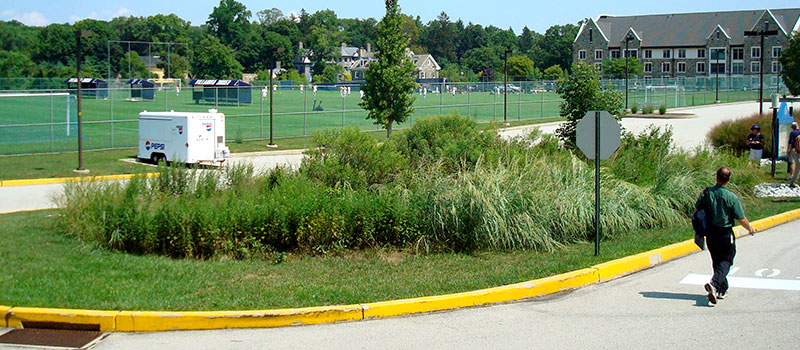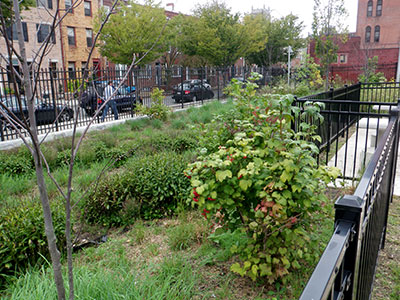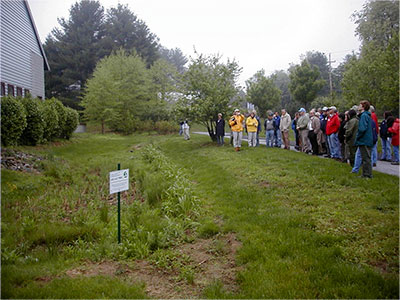How it Works
Stormwater Best Management Practices (BMPs) involve site development design that incorporates the most suitable techniques, or combination of techniques to best manage the anticipated quantity and quality of stormwater flow, based on an evaluation of site conditions and planning requirements. While a combination or system of BMPs (often referred to as a BMP "treatment train") should be included in site designs for the most effective stormwater management, it is preferable that the overall site design be based upon the protection of existing natural resources and hydrological features, with these features being incorporated into the overall site design with little or no disruption to these features.
Traditional Stormwater Practices
Traditional BMPs, such as standard detention basins, are effective in temporarily detaining flood waters by releasing runoff over an extended period of time. These BMPs provide a minimal amount of water quality treatment. Traditional BMPs were often designed to detain runoff rather than promoting infiltration, thus the total volume of runoff eventually released into streams was not significantly reduced. As a consequence, these BMPS help to reduce the flood peak, but they may also increase the duration of elevated water surfaces as the detained water is released over time. Additionally, the stormwater released from traditional BMPs may carry increased pollutant loads, particularly in the immediate aftermath of a storm event, that require additional water quality treatment to protect stream water quality and aquatic habitats.
Green Stormwater Practices
Advances in stormwater management have led to a natural hydrology site design process with a greater focus on low-impact development and the installation of green infrastructure. This process first incorporates the existing natural resources and hydrological features into the overall site design with little or no disruption to these features, and then incorporates low-impact and non-structural BMPs around them, and only then proceeds to incorporate standard BMPs as necessary to achieve peak rate reduction and infiltration. This approach minimizes disturbance of land area, natural features and site hydrology, preserves concentrations of open space, woodlands and environmentally sensitive features, and incorporates non-structural BMPs and low impact development techniques to minimize the usage of traditional structural stormwater facilities.
New design guidance recommends using green infrastructure wherever possible to manage stormwater runoff. Green infrastructure is distinct from traditional "gray infrastructure" in that it attempts to utilize natural processes to store, infiltrate, or evapo-transpirate stormwater runoff to reduce overland flow into streams and waterways. Green infrastructure is better able to treat and reduce stormwater at its source, while also providing additional economic and aesthetic benefits to the community. These practices include vegetated swales, rain gardens, porous pavement, urban tree canopies, naturalized infiltration basins, and green roofs.
BMPs in Urbanized Areas
Stormwater BMPs are applicable for every landscape. Urbanized landscapes (including Urban, Suburban, and Rural Centers and Suburban Landscapes), such as boroughs, downtowns and other population centers, frequently experience severe stormwater runoff impacts due to the density of development and high percentage of impervious surfaces that results in increased surface runoff and flooding. BMPs should be incorporated into new developments in all landscapes in both rural and urbanized areas, and existing development should also be evaluated for retrofits, such as naturalizing detention basins, to improve existing stormwater runoff problems. In Chester County, many stormwater management issues stem from areas that were developed prior to the widespread use of stormwater management BMPs. To reduce runoff from these areas, municipalities should consider how stormwater management can be improved for all re-development projects. Note that both Rural and Agricultural landscapes, though not designated growth areas, can experience limited development. If these developments are permitted in a way that is low-impact (including minimal impervious surfaces and limited impacts on natural features) stormwater runoff impacts can be significantly minimized.
BMPs for Rural and Agricultural Areas
Rural and Agricultural landscapes may also consider agricultural BMPs (often referred to as conservation practices) which are frequently defined in soil and water conservation plans developed for individual farms. Guidance and oversight of these plans and practices are provided to farmers by the Chester County Conservation District (CCCD), Natural Resources Conservation Service (NRCS), and cooperative extension agencies. CCCD also reviews and implements the erosion and sediment control program for construction sites (under the National Pollutant Discharge Elimination System, or NPDES) for Chester County as the delegated agency for Pennsylvania DEP.
Low Impact Development (LID) as
defined by the PA DEP:
"Site design approaches and small-scale stormwater management practices that promote the use of natural systems for infiltration, evapotranspiration, and reuse of rainwater. LID can be applied to new development, urban retrofits, and revitalization projects. LID utilizes design techniques that infiltrate, filter, evaporate, and store runoff close to its source. Rather than rely on costly large-scale conveyance and treatment systems, LID addresses stormwater through a variety of small, cost-effective landscape features located on-site."
DEP requests that both low impact development and green infrastructure be defined and recognized as stormwater BMPs in municipal stormwater ordinances.
Minimum Ordinance Standards under Act 167
Since the adoption of the County-wide Act 167 Stormwater Management Plan in 2022, Chester County municipalities must implement stormwater management by adopting the approved County-wide Act 167 Model Ordinance, or equivalent standards, as a separate stand-alone stormwater management ordinance. The county's model ordinance contains additional technical evaluation and design guidance documents, including information on natural hydrology and site design processes, West Nile virus guidance, and example operation and maintenance agreements. Municipalities may recommend or provide these documents to designers to assist in their understanding of state-of-the-art options and their performance, design, maintenance, and cost aspects. Within the ordinance or accompanying guidance documents, a hierarchy of types of BMPs can be established to encourage the use of those practices that best suit the conditions and needs of the municipality. For example, BMPs that reduce the volume of runoff and enhance groundwater recharge of stormwater may be defined as highest priority (given suitable site conditions) while traditional detention ponds may be defined as lower priority.
BMP Maintenance
The effectiveness of BMPs depends upon regular inspections and maintenance. Specific Operation and Maintenance (O&M) Plans should be created for all stormwater management BMPs. These plans should include information on the location of all BMPs and the required frequency of inspections. These plans should also identify the person or entity responsible for maintenance and routine inspections and include specific instruction for how each permanent stormwater BMP will be operated and maintained. Municipal stormwater management ordinances contain specific requirements for O&M Plans, inspection frequencies, and municipal and landowners inspection responsibilities.
In Chester County, O&M Plans for all new stormwater BMPs are required to be recorded at the Chester County Recorder of Deeds so that these documents are available to future property owners in perpetuity. The individuals or entity responsible for conducting inspections and routine maintenance should be notified of their responsibilities prior to recording final O&M Plans.
BMP maintenance may involve routine care and upkeep, such as the removal of accumulated sediment, vegetation replacement, erosion repairs, and the removal of trash and debris. Maintenance may also involve more intensive repair measures, such as the restoration of areas of erosion or the control or removal of invasive plant species. Stormwater BMPs that are not properly maintained can result in flooding, erosion, and damage to property. Issues identified during routine inspections should be addressed as soon as practicable to prevent BMP failure. Common issues observed during inspections include corroding or blocked pipes or outlet structures, erosion or bare spots near spill ways, swales, or outfalls, and an accumulation of excess trash, debris, or sediment.
Model Ordinance Standards
As of 7/24/23, a total of 56 Chester County municipalities adopted the 2022 model ordinance standards.
Retrofitting or Naturalizing Stormwater Basins
Many older stormwater basins were designed to capture stormwater runoff from roads, parking areas, and buildings and route this runoff into nearby streams as quickly as possible to prevent localized flooding. Unfortunately, this often resulted in downstream erosion and flooding, particularly with areas of denser development. Additionally, many of these systems were not designed with local water quality, ecological, or environmental impacts in mind. Older stormwater basins often have limited infiltration capabilities and limited ability to remove or reduce sediment and other pollutants.
One option to improve the functioning of existing basins is to undergo a basin retrofit. Retrofitting existing stormwater basins provides a relatively low-cost opportunity to reduce localized flooding, improve water quality, and improve ecological benefits of stormwater systems by implementing naturlaized features or adhering to more current design guidelines. Retrofitted basins can help to promote infiltration and evapotranspiration of stormwater runoff to reduce the overall volume or water directed to local streams. This helps to reduce flooding and erosion downstream, decrease downstream pollutant loads, and recharge local groundwater aquifers. Many retrofitted systems also incorporate native wetland vegetation that improves local aesthetics and provides habitat for a host of wildlife species. Retrofitting existing basins can also be an effective method for achieving municipal MS4 permit nutrient and sediment load reduction requirements.
Professional engineers or landscape architects should be consulted when considering whether to retrofit a basin. Permission may also be required from the municipality if the basin is included in an existing Stormwater BMP Operation and Maintenance Plan. Various grant programs, such as PA DEP's Growing Greener Program, are available to assist with the cost of design and implementation of basin retrofit projects. Local watershed and conservation organizations may also be able to provide guidance and project oversight. While there are up-front costs for designing and implementing basin retrofits, retrofitted basins typically provide substantial savings over time by reducing the cost of long-term maintenance and mowing.

Benefits
The use of stormwater best management practices provides the following benefits:

Reduces Erosion
Limits damage to streambanks and floodplains from events where the velocity of stormwater erodes these features.

Reduces Pollution
Limits damage to streambanks and floodplains from events where the velocity of stormwater erodes these features.
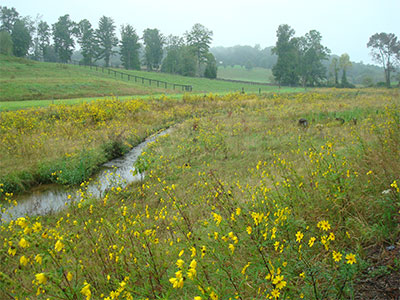
Protects Stream Channels
Prevention of stream channels from the negative impacts of erosion, scour, and sedimentation.
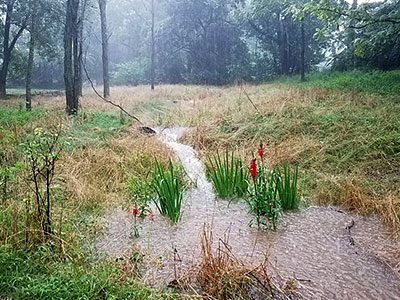
Protects Natural Resources
Protection of natural resources, along with the aquatic habitats and species within them.
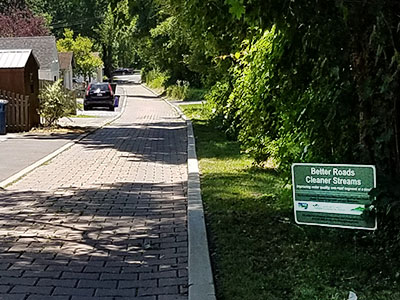
Recharges Groundwater
Increase in infiltration and natural groundwater recharge to protect groundwater supplies and stream baseflows.

Reduces Impervious Surfaces
Minimization of impervious surfaces promotes infiltration, and reduction of the volume, intensity and impact of stormwater runoff.
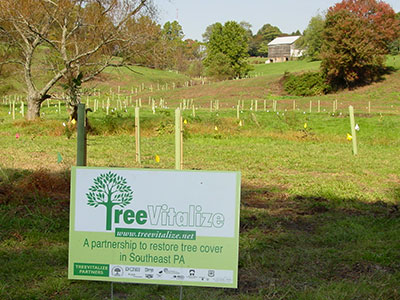
Reduces Flooding
Reduction of flood impacts assists in the preservation and restoration of the natural flood-carrying capacity of streams and floodplains.

Reduces Stormwater Peak Flows
Reduction of the volume of stormwater generated, along with managing and releasing stormwater as close to the runoff source as possible.

Reduces Property Damage
Reduction in the strength/intensity, frequency and damaging impacts of flooding that affect public safety, property and infrastructure, and public services.

Reduces Infrastructure Requirements
Reduction of grey infrastructure requirements and maintenance costs for stormwater management facilities can result from the increased utilization of green infrastructure and natural stormwater best management practices designs.
Design guidance documents can help explain state-of-the-art options and their performance, design, maintenance, and cost aspects.
Get Started
As required under PA Act 167, the Stormwater Management Act, Chester County municipalities implement stormwater management standards by adopting the 2022 DEP-approved Countywide Act 167 Ordinance. The minimum standards are implemented by amending existing municipal codes or through separate stand-alone stormwater management ordinances making them consistent with the newly adopted and approved standards.
In conjunction with the model ordinance, technical evaluation and design guidance documents may be recommended or provided to assist designers in understanding state-of-the-art options and their performance, design, maintenance, and cost aspects. Within the ordinance or accompanying guidance documents, a hierarchy of types of BMPs can be established to encourage the use of those practices that best suit the conditions and needs of the municipality. For example, BMPs that reduce the volume of runoff and enhance groundwater recharge of stormwater may be defined as highest priority (given suitable site conditions) while traditional detention ponds may be defined as lower priority. The list of accepted BMP practices continues to expand as new practices are proven effective.
Hierarchy of Practices
The most effective municipal process for implementing BMPs is to include a site design process in its municipal code with a hierarchy of stormwater management practices. The hierarchy should require an applicant to prove that site conditions are not suitable to accommodate infiltration facilities before the use of traditional detention basins can be considered. A Model Site Design Process is outlined in the County-wide Act 167 Stormwater Management Model Ordinance.
Current Technical Standards
The stormwater management ordinance should reference the most current BMP specification manuals or the municipality must include all necessary specifications within an appendix or directly in its municipal code. The use of an appendix is encouraged to ensure that the specifications remain current without the need to continuously update a municipal code.
Review of Stormwater Management Plan
The municipality should include a requirement for a site specific stormwater management plan to be submitted with the preliminary land development plan, thereby ensuring that comprehensive stormwater management can be integrated effectively into the site design process. Model stormwater management plan standards are provided in Section 402 of the County-wide Act 167 Stormwater Management Model Ordinance. This site-specific stormwater plan should be reviewed by the municipal engineer to establish that the most effective facilities with the least environmental impact were proposed, to the greatest extent possible, before detention facilities were considered.
Inspection and Enforcement
Inspection and enforcement procedures should be established to ensure proper installation of the stormwater management systems, and to ensure the systems are properly maintained and operated. Model enforcement provisions are provided in Article IX of the County-wide Act 167 Stormwater Management Model Ordinance.
Site visits provide educational opportunities for municipal officials, planners, and reviewers to gain a better understanding of how BMPs function.
Other points that should be addressed when developing BMP standards:
Educating Municipal Officials, Planners, and Reviewers
An increasing body of literature and easily accessible educational opportunities are available for gaining more understanding of how BMPs can facilitate stormwater control within municipalities. These practices are also significant cornerstones in the protection and management of all water resources for multiple purposes (resource preservation, water supply, flood control, etc.) and they can be integrated with other ordinances for a comprehensive water and natural resources management approach.
Design Requirements
The design and selection of stormwater management BMPs are dependent upon the designer/planner's technical understanding and expertise in the merits and limitations, performance standards, costs, management requirements, site conditions, and other design and evaluation elements of BMPs. This involves maintaining an up-to-date understanding of the technical information and specifications of advances in stormwater management. Therefore, a municipality should acquire, and also require, the use of the most up-to-date manuals and documents, several of which are listed at the end of this document. Municipalities are encouraged to contact the Chester County Conservation District or the Chester County Water Resources Authority for suggested references and educational materials.
Ownership, Operation, Maintenance and Inspection Responsibilities
BMPs require routine maintenance to ensure proper operation. Preliminary plans should define specifically who will be ultimately responsible for the ownership, operation and maintenance of any system for its life span. The responsible party must have the financial ability and commitment to fulfill that responsibility throughout the life-cycle of the facility, and this Operations and Management (O&M) agreement should be attached to the property deed and "run with the property." The increased number of these facilities will also require increased inspection during construction and during the life-cycle to enforce proper maintenance standards and specifications. In addition, the pollutants removed from the filters of water quality BMPs must be disposed of properly, which can lead to a further burden on the municipality for enforcement, inspection and, in some cases, removal and disposal of potentially toxic/hazardous materials.
Some BMPs, like green roofs, reduce costs over time, but require higher initial capital costs for design and construction.
Considerations
Operation and Management Plans are Required
BMPs require operations and management plans and agreements in perpetuity. The individual, organization, or agency to be responsible for the operation and maintenance of the BMPs for the life of the project must be identified at the onset of the project, and it must be ensured that the responsible party has the financial ability and commitment for fulfilling that responsibility.
Increased Application Reviews
The use of BMPs increases the number of applications that require review, as well as inspections and enforcement during and after construction.
Initial Cost
Some BMPs, while they may reduce costs over time, require higher initial capital costs for design and construction.
Education is Necessary
Continued education is required of reviewers, planners, municipal officials and designers to keep up to date with advances in stormwater management practices and regulations.
Increased Homeowner Responsibility
Increasing responsibility is being assigned to homeowners in minimization of runoff of stormwater and pollutants from their property. Educating residents regarding homeowner landscape practices and pollutant prevention techniques is required to address the ultimate source of much of the runoff.
Permanent Protection is Required
BMPs require permanent protection from alteration to ensure long-term operation as designed, and it is recommended that a deed restriction be placed on the property to "run with" the land, regardless of owner.
Specialized Knowledge and Construction Techniques Required
Retrofitting stormwater facilities can involve specialized knowledge and construction. An integrated approach on a watershed-wide basis that is specifically designed and executed will achieve the maximum benefit, but this could be more complicated than building conventional stormwater facilities.
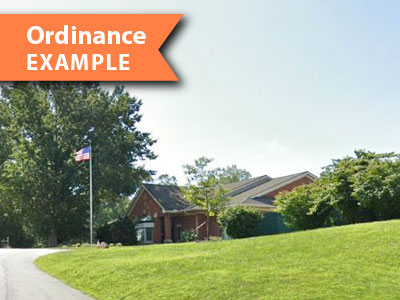
East Bradford Township
The East Bradford Township Stormwater Management Ordinance is consistent with the current 2022 model stormwater management ordinance.
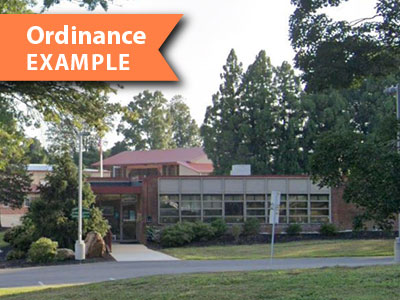
London Grove Township
The London Grove Township Stormwater Management Ordinance is consistent with the current 2022 model stormwater management ordinance.
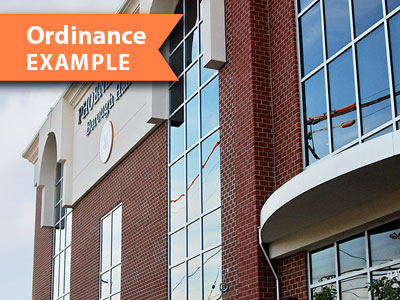
Phoenixville Borough
The Phoenixville Borough Stormwater Management Ordinance is consistent with the current 2022 model stormwater management ordinance.

West Goshen Township
The West Goshen Township Stormwater Management Ordinance is consistent with the current 2022 model stormwater management ordinance.
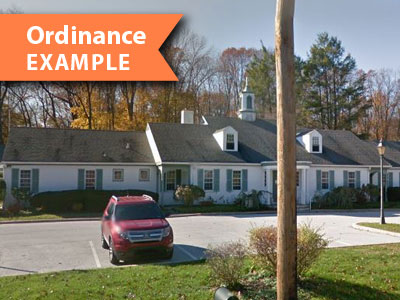
Willistown Township
The Willistown Township Stormwater Management Ordinance is consistent with the current 2022 model stormwater management ordinance.


